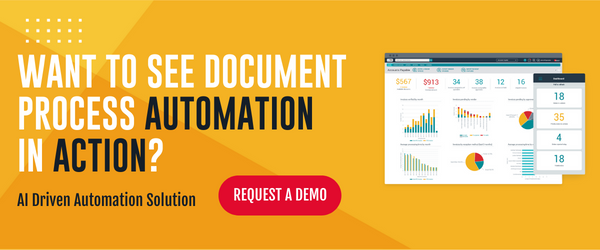If you haven’t read Part 1 of this series, you can find it here!
Hello again, change management fanatics. In Part 2, this blog series is dedicated to the backbone of successful digital transformation: change management. We will focus on the system factors that need to be in place and addressed before starting the actual change process. While this may seem ancillary or extraneous to the change management process, it’s the pillar holding up the foundation of change management. Before starting a change, you must first have all the pieces together, much the same way as you have blueprints and designs for a house before beginning construction.
Vision
The first system factor to consider is vision. Simply put, vision is what you are changing into. Vision should not contain how you are going to change, or what you are going to change, or the time for change; but should be limited to what the change looks like. A good way to craft the vision is to answer three questions:
- What does the future look like?
- Why should they care?
- What are the benefits we are expecting to get from the change?
The first question, at this stage of change management, is the most important. If, when leadership provides the vision statement, it doesn’t have a description of the future, it will be a hard road ahead as you do not, proverbially, know where you are going, or when you have gotten there. The vision, as you might expect is the most important piece of the system factors when looking at them as a whole. This is the plan and rationale for changing the way an organisation does something. The vision for change is different than the vision statement of a company.
Accountability
The next system factor to look at is accountability. This part of the system is making sure that steps are being taken and planning is being done on the change management front. Accountability is not just a step here in the planning part, but an essential part of maintaining throughout the project. This system factor at this point is about setting up a system for how accountability will be measured and maintained throughout the process.
Stakeholder involvement
Stakeholder involvement is the next factor to look at. This entails making sure there is a framework for how to consistently engage stakeholders throughout the project. Their presence is important to show support for the future state, and their involvement will also show continued support for the efforts throughout the change process.
Skill development
When evaluating change, considerations must be made for how to develop skills with the people that will be changing. Change in any system, whether it be software, hardware or other, will need time set aside for skill development. In order for change to be successful, people must still be able to do their job. Building in ample time and having a reasonable expectation of how long it will take to foster a new skills competency is something that must be taken into consideration when planning for change.
Metrics, policies and processes
How will the organisation know change has been successful? How will the organisation know change has happened? What is the value of change? How are we going to measure the value? How are we going to make sure the new system sticks (other than good change management)? What will tomorrow look like?
All of these questions bring us to the next system factor: metrics, policies and processes. When deciding on changing a process, you need to know the measurements that you are looking to improve. Change always happens for a reason. The reason is usually to improve processes. But without quantitative data, it is hard to illustrate improvement. The two go hand in hand to make sure that resources do not go back to an old system which may end up costing time and/or money to the company.
Reinforcing behavior
At the end of the process is the reinforcement of behavior. Getting change to happen is great, making change stick is even greater. With change happening, you want to make sure that all your effort is not for naught. This can be combined with the aforementioned policy/procedures system factor, but this extends beyond the day-to-day process of how they do their job. This system factor focuses more on how to keep them using the future state, not what the future state looks like.
Now that you know what the system factors are and how to address them, what happens if we don’t? The first consequence of not addressing the system factors is that change won’t happen. If you want successful change, you need to consider the system factors and at least have conversations around them to put a plan in place for them.
The other consequences are not as instant as change not happening, but they can significantly slow down, delay or undermine the change management efforts. If we ignore the system factors, this can lead to confusion, lack of self-confidence, conflict and loss. Confusion can be a major hindrance. If people don’t know what is happening, it won’t happen. Self-confidence is something you want to foster through change. Adopting a “you can do it” motto also helps to build up self-confidence. This goes along with confusion. If your team knows what they are doing, they can figure out how to do it, thus bolstering self-confidence.
Loss and conflict are things everyone wants to avoid at all costs during change. Overall, change is a stressful time for everyone. Change invokes fear. Everyone is scared of the unknown, and change is the unknown. If you couple confusion about what is changing and when, and people do not have the self-confidence that they can do whatever the future state requires, you will be met with conflict. There will be major pushback and resistance to change. The easiest way to overcome is this to communicate and address the system factors. Loss comes in the form of time and productivity. Again, if they don’t know the what and the how, then they won’t be able to do what they need to do.
In your last few moments here, let’s discuss how to navigate getting the system factors in place and how to correct any missteps in the process. First and foremost, communicate. If you want sustained change, get the system factors planned and addressed. If there is confusion, ensure there is clarity around the vision and purpose. Remember that a shared vision addressed and incorporates the value of the change and illustrates the future state thus eliminating confusion.
When there is a lack of self-confidence, get the stakeholders involved. Have sessions set up to walk through the future state, do training, create games, have workshops, communicate opportunities for skills development, etc,. The same things will help with conflict and confusion. The more that is communicated, the more these consequences will fade.
To sum it all up, communicating early and often a single vision illustrating the future state that shows value, will help make a sustainable change in your organisation.
-Written by, Frank Cook


